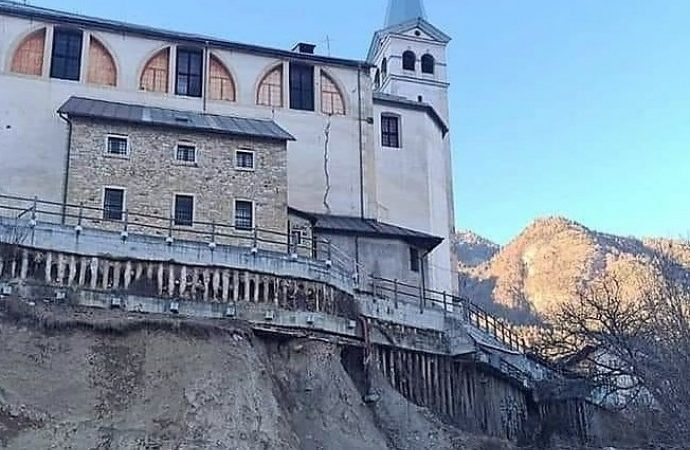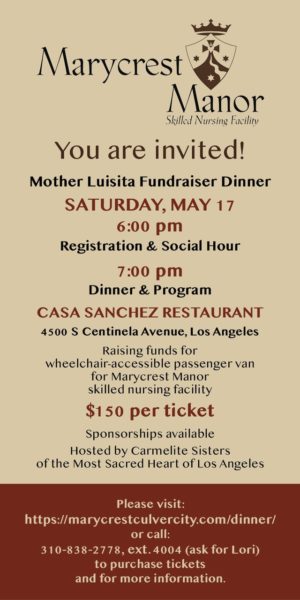ROME – Yesterday morning, I found myself in the check-out line at our local Roman supermarket. I like to do the weekend shopping fairly early on Saturday, because the stores here won’t restock again until Monday morning and, if you wait too long, they’ll run out of a few basics.
Thus it was that I was next in line to pay, with a groaning full cart, when an old lady hobbled up holding just a few items. I waved her ahead, and, now on friendly terms, we began chatting. At one point she asked what I do for a living, and when I told her I’m a journalist covering the Vatican, it was off to the races.
“The Vatican?” she scoffed. “What a joke. The monsignors always have their hands out when they’re not looking for little boys, the bishops get fat while people suffer, and the cardinals are stabbing each other in the back.”
“If the Vatican really cared about anyone, they’d be vaccinating ordinary Romans right now, doctors and nurses and teachers, not these rich cardinals who’ve never done anything for anyone,” she sneered.
At that stage it was the elderly lady’s turn to put her items on the checkout belt. Hoping to change the subject, I asked if this was her shopping for Sunday lunch.
“Yes, yes,” she said. “I have to have everything ready before we leave for Mass. If I don’t push, my grandkids won’t go.”
She said that, by the way, with no trace of irony whatsoever. And that, in a nutshell, is Italian Psychology 101 when it comes to the Catholic Church.
Italy is where relationships trump logic (not to mention law, public order, politics, and pretty much everything else) every day of the week, and, as it turns out, twice on Sunday. As a result, an ordinary Italian experiences no incongruity at all in being both ferociously anti-clerical and devoutly attached to the faith and their local parish.
Of course, secularism has taken its toll here, and not every ordinary Italian feels that way. Enough do, however, to make it still remarkable, perhaps especially in the generation my elderly interlocutor represents.
This explains why in Saturday’s Italian papers, alongside coverage of the latest COVID news, the death of Prince Philip, and an Italian challenge to China by new Prime Minster Mario Draghi, prominent space was also assigned to the death on Friday of Father Giuseppe Bortolas, pastor of a small church in Valle di Cadore in Italy’s far northern Dolomite mountains near the border with Austria, from a cerebral hemorrhage.
Bortolas was found Wednesday on the floor of his residence passed out and suffering from hypothermia, and he was rushed to a local hospital where he eventually succumbed.
Whatever the technical cause of death, most locals appear to believe that what really killed Bortolas was fatal worry for the state of his small parish church San Martino Vescovo (“St. Martin the Bishop”). The small church, considered a symbol of the Dolomites, sits on a mountain peak where the first Masses were said in the Roman era.
Since Storm Adrian swept through the area in 2018, causing $4 billion in damage and leaving mountaintop settings such as St. Martin the Bishop weakened and vulnerable, Bortolas had been sounding alarms, urging that the church be reinforced and stormproofed. For the first time in centuries, this year Holy Week could not be celebrated at St. Martin’s, and the price tag for securing it is estimated at $1.2-$2.4 million.
All of that, apparently, left Bortolas deeply anxious.
“I talked to him about it during Lent. For a pastor, to see your own church at risk of collapse means fear and pain,” said Father Giorgio Lise, rector of the local seminary and a longtime friend.
“He was a man of the countryside … simple, generous, sometimes a little naïve, but as a pastor people loved him because he was always attentive to their suffering,” Lise said.
Bishop Renato Marangoni of Belluno had travelled to Valle di Cadore on Wednesday to speak with Bortolas about what needed to be done. The plan was to say Mass together and then talk, and it was Bortolas’s failure to show up in the sacristy to vest that led to his discovery in the residence.
Later that night, Marangoni administered the last rites in the presence of sisters from the parish, local members of the Carabinieri military police who were devoted to Bortolas, and the mayor of Valle di Cadore, representing residents of the small town of 2,000 souls who saw their pastor as their voice.
There’s no place on earth where the Catholic Church, for both good and will, has left a deeper imprint on the culture than Italy. It’s seen the conversion of the Roman Empire, the rise of medieval Christianity, the theocracy of the Papal States, the anticlerical resentment that was part of the Risorgimento, the rise of the Imperial Papacy in the 20th century, and now centuries of secularism that have shaped popular attitudes but still left church and state deeply intertwined.
In other words, if you want to know what long-term exposure to ecclesiastical officialdom does to ordinary Catholic believers, this is the place.
Bad news? The guys in charge and the system they represent, usually with the lone exception of the sitting pope, often don’t come off very well.
Good news? Rank-and-file priests and religious, the people out there every day living and dying for the people they serve, like Bortolas, remain national heroes. Their stories are told, mostly because they’re not myths or fairy tales but the honest-to-God, true-to life real deal.
As verdicts on centuries of intensely Catholic culture go, I suppose, you could do worse.

